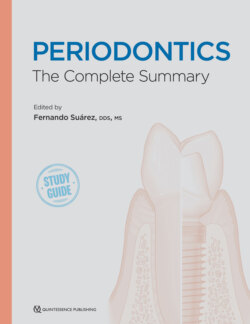Читать книгу Periodontics - Fernando Suarez - Страница 109
LOCATION OF THE RESTORATIVE MARGIN
ОглавлениеThe relationship between gingival health and the margin of the restoration has also been researched.206–208 Newcomb showed in 51 subjects that the more apical the margin of the restoration, the more gingival inflammation was present according to a gingival index.209 Four groups were classified depending on the distance of the crown margin to the base of the crevice (CM-BC) and found that margins as close as 0.75 mm or less can induce gingival inflammation.
A human histologic study210 showed that restorations placed below the gingival margin were likely to accumulate plaque subgingivally, even when routine oral hygiene was performed. It was also noted that individual sites can re-form plaque as soon as 6 weeks on subgingival restorations, while others can be free of plaque for as long as 2 years.
A 26-year longitudinal study examined the long-term effects of restorations with supra- and subgingival margins on periodontal health.211 It was concluded that subgingival margins exert a detrimental effect to gingival and periodontal health. Additionally, a “burn-out” effect was suggested as loss of attachment in teeth with subgingival margins was clinically detectable 1 to 3 years after the placement of the restoration.
